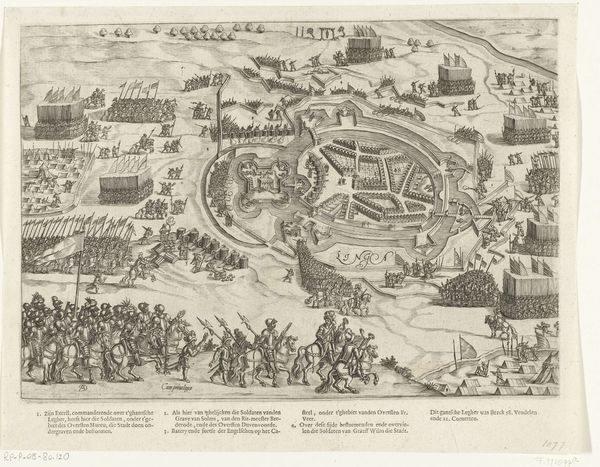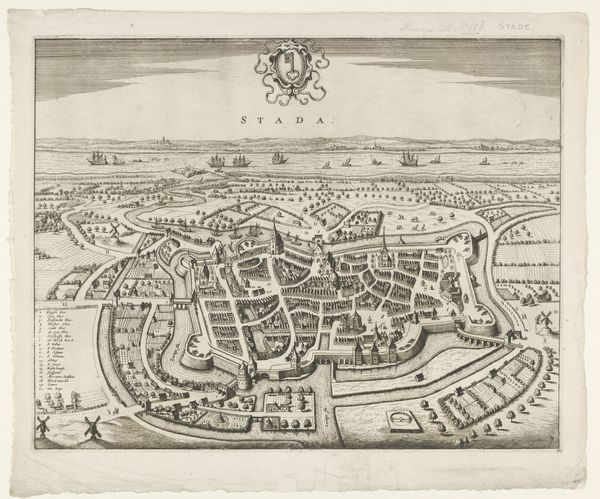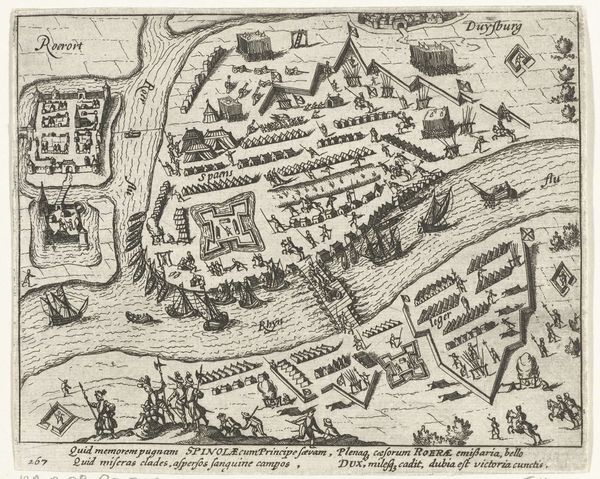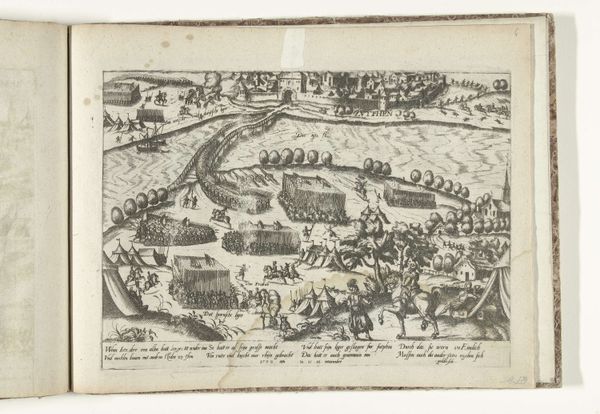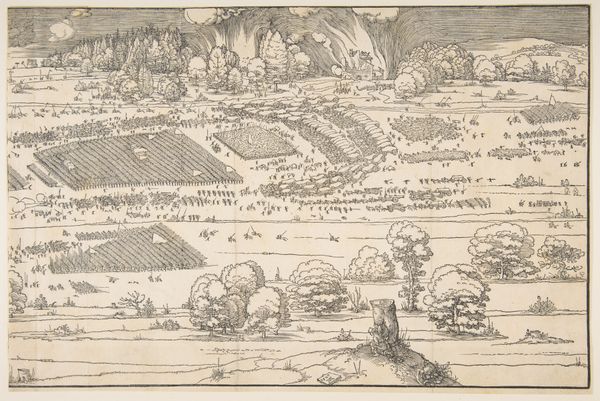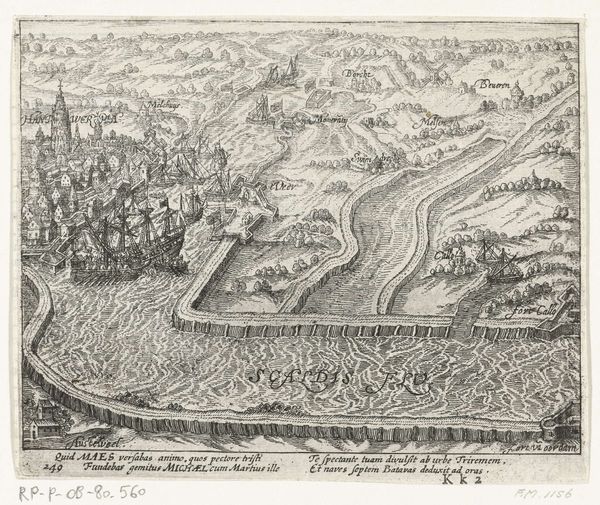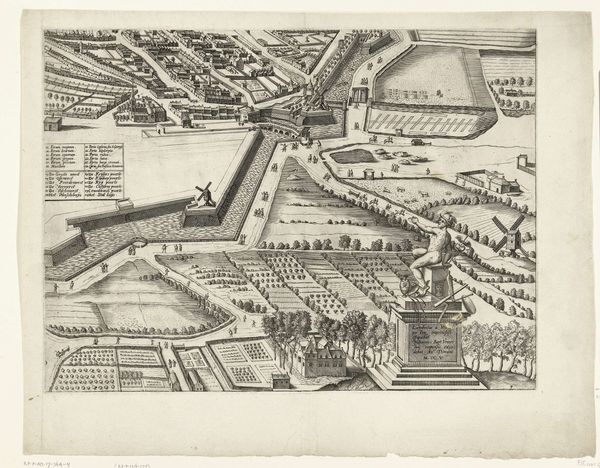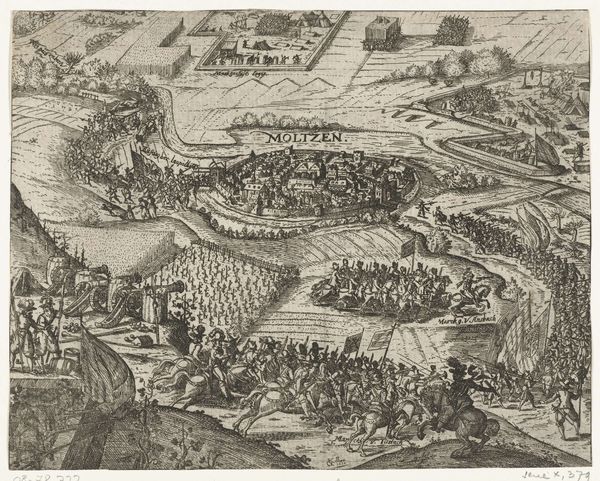
print, engraving
#
medieval
#
narrative-art
#
pen drawing
# print
#
line
#
genre-painting
#
history-painting
#
academic-art
#
engraving
Dimensions: height 420 mm, width 710 mm
Copyright: Rijks Museum: Open Domain
Curator: This captivating print, titled "Optrekkend Ottomaans leger," depicts a massive Ottoman army on the move. Created in 1558 by Frans Huys, it is currently held here at the Rijksmuseum. My first impression is one of intricate detail—the sheer number of figures is quite astounding, but something about the landscape and tonality lends itself to bleakness, a foreboding feeling perhaps? Editor: I find myself drawn to the precise lines that define the masses of soldiers. It’s printmaking at its most disciplined; line work serving political ends. To understand it properly, we should look into the specific conditions under which the piece was made and for whom. Curator: Exactly, that's crucial! The means of production really shaped its impact. This print isn’t merely decorative. Prints like this were essentially the mass media of their day, circulated to inform and influence public opinion. Look at the careful articulation of uniforms, weaponry, and fortifications, and also consider the potential audience’s reaction to representations of such formidable military power. Editor: Right, and thinking intersectionally, consider the intended audience. This image was likely circulated amongst European powers threatened by the Ottoman Empire. What role did these images play in solidifying European identity through a foil of the ‘foreign invader’? This piece highlights anxieties regarding power structures and cultural differences, painting the "Other" as a dark and dangerous horde. Curator: Yes! And in terms of the construction, we cannot neglect the role of labor, either. Consider the labor required of Huys to produce this meticulously detailed copper engraving as part of that larger system, or, further, the unseen labor of all of the hands involved in material production, and print distribution throughout Europe. Editor: It is compelling to observe the piece’s position within networks of political anxiety. To fully appreciate this historical artifact, we should really unpack the network of historical power relationships at play. And how those historical power relationships can echo within contemporary geo-political conversations as well. Curator: Agreed. The print, its creation, and circulation, are bound together in early examples of image propaganda. We must continue examining the conditions that allowed for its production to begin with! Editor: Precisely, looking at how an image can perpetuate narratives – that’s what keeps it relevant, centuries on.
Comments
No comments
Be the first to comment and join the conversation on the ultimate creative platform.
